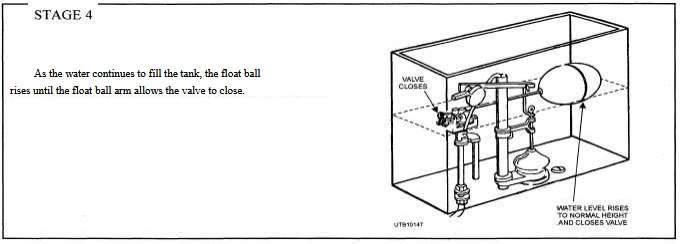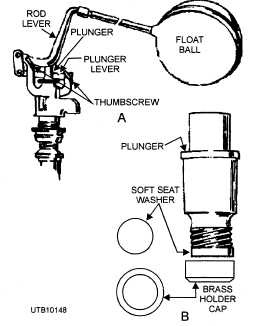Table 5-4. - Flush Tank Process - Continued

or a worn valve seat. Start with the float ball, keeping in mind that a leaky, waterlogged float prevents the plunger from closing properly. A small leak in a copper float ball can be remedied by soldering. If it has a large leak, though, simply replace the float ball with a new one. A damaged float arm should also be replaced with a new one. Sometimes the float arm is bent or does not allow the valve to close. In this case, bend the float arm downward a bit to push the valve tighter into its seat. To replace the washer on the bottom of the plunger (view B, fig. 5-42), start by shutting off the water. Now, unscrew the two thumbscrews that pivot the float rod lever and the plunger lever (view A, fig. 5-42). Push the two levers to the left, drawing the plunger lever through the head of the plunger. Now, lift out the plunger, unscrew the cap on the bottom, insert the new washer, and reassemble the parts. If the cap is badly corroded, replace it with a new one. When replacing the washer, examine the seat for nicks and grit. The seat may need regrinding.

Figure 5-42. - A. Ball cock assembled; B. Plunger washer and cap.
Suppose water continues to run into the closet bowl after flushing, yet the tank does not refill. Some part of the FLUSH VALVE assembly is at fault because the flush valve is not closing properly. To locate the trouble and get the tank back in order, proceed as follows:
First, stop the inflow to the tank by holding up the float ball or supporting it with a stick. Then drain the tank by raising the rubber stopper ball or the flapper. Now, examine the stopper ball to see if it is worn, out of shape, or has lost its elasticity. If either condition exists, unscrew the lower lift wire from the ball and replace the ball with a new one; or if it is a flapper valve, remove the flapper and replace it. There are no lift wires or wire guides to adjust on the flapper valve type of flush valve. Ensure the lift wire is easily fitted over the center of the valve by means of the adjustable guide holder. By loosening the thumbscrew, you can raise, lower, or locate the holder over the overflow tube. The horizontal position of the guide is fixed exactly over the center of the valve by loosening the locknut and turning the guide screw.
The upper lift wire should loop into the lever arm hole directly above the center of the valve. The tank should empty within 10 seconds. Because of lengthening of the rubber ball and insufficient rise from its seat, the time needed to empty the tank may be longer than 10 seconds and the flush weak. In this case, 5-28
Continue Reading